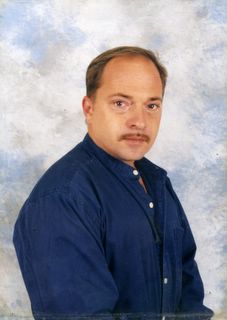NELA ARES After Action Review
As Issac approached, all eyes were on the Gulf of Mexico. Where was Isaac going and how strong would Isaac be when it made landfall?
As we determined our state would take a direct hit, our fine hams went into action.
(Here is my Hurricane Isaac Video. Keep reading the after action below.)
:
The Louisiana Traffic net (LTN) which normally meets every day at 1800hrs CST began operating around the clock as an outgoing health and welfare net on two bands; 75meters at night and 40 meters during the day.
The daytime LTN (emergency session) tied into the 5th region traffic net at 1030hrs CST on the same frequency - brought up by the same NCS. The 5th region net also meets daily and has done so for many years.
Many of the hams who checked into these nets, especially in Louisiana, had VHF contact with their parish Emergency Operation Centers (EOCs). If commercial and other traditional forms of communication - public safety, cellular, landline, were disrupted, we would fill the gap.
There was also a Delta Division Emergency net which operated for about 24 hours. It ran daytime on 40 meters, night on 75 meters. This net was specifically brought up to handle emergency and priority traffic that might have originated in the effected areas of all of the Mississippi Delta region.
Local EOCs had their ARES nets up and running incase local authorities and first responders needed additional communication resources.
Hams from all over the country were helping either as listening stations, relay stations, or as net control stations.
Net control stations for the Delta Division Emergency net were as far away as Tennessee. NF5B, Richard, the Delta Division director brought this net up and coordinated with other nets and performed other duties.
I think we did a good job in saturating the region and the states involved with ham operators. I realize that some areas where flooding was extensive, that even hams were most probably flushed from their homes. That said, hams usually carry hand-held or mobile devices and their own temporary power sources.
Sometimes, though I haven’t ever seen it happen yet, hams get stationed at evacuation shelters to assist communications with state, parish and local government officials. In my area, this event wasn’t widespread enough to necessitate such deployments.
-------
Having said the above, I think if the damage had been more sustained and wide spread, there are some improvements that could have been made.
We have a parish EOC, as most other parishes has with large cities. Upon signing in with Emergency nets, it would be GREAT for those stations to indicate the type of communication capabilities they have with their EOC.
Some are in the same building and others have vhf contact. I for example checked WB5LHS - Gov. Jindal’s office into the Delta Division Emergency net. It would have been nice if I could have relayed messages from Louisiana’s Governor’s office to the Ouachita Parish EOC if they lost all traditional forms of communication.
If necessary, I wouldn’t have been able to do this because at that time, no one was manning the ARES radios at our EOC. I think this was an error on our part in the NELA district because I had the 4pm to 6pm shift which was still relatively early with the center of circulation being over south central Louisiana. The New Orleans and Lafayette was till experiencing the brunt of Isaac, and we were yet to realize the potential of him.
I was asked if I wanted to work the EOC. I turned it down because I’m vision impaired which means I’m actually handicapped when I don’t have adaptive equipment. Additionally, I’m handicapped operating at the EOC because the EOC communications room uses laptop computers, and let me tell you, I can’t type on those things!
I have to use a hand-held magnifying glass to see what I’m writing, and then to read what I had written. If I hold a magnifying glass in one hand, a pen in the other,which hand will I use to key the radio?
…But, the EOC radios don’t have foot switch microphones and headsets. And, here is the crux of why I don’t operate at the EOC. In my ham shack I have none of these problems. I have a computer I can type on, I have a foot switch and headset. I’m much more efficient here in my shack.
Another issue I had identified is the fact that there are a lot of nets, and some nets don’t seem interested in the practicality of knowing where the other nets were and their purposes.
I know of SATERN nets, the Hurricane Watch nets, the Delta Division Emergency net, the Louisiana (health and welfare) Traffic Net, there was a Mississippi ARES net, and the 5th region traffic net.
From the start of the LTN for health and welfare, I couldn’t figure out why a net must limit the type of traffic it handles. Maybe it is so the other nets have a purpose, just a guess. The LTN was further limiting itself to outgoing traffic only. Do you think the net control should would actually tell stations with emergency traffic, “you gotta go to 7.275 to pass that.”
What happens if the stations then goes to 7.275 and no one is there, or he can’t reach anyone? Now the traffic is delayed and people’s lives and/or property could be put at risk.
When I was in the U.S. Army, my unit was the first in the USA to field a brand new communications system. Our unit, 5th Signal Battalion was charged with learning to use the equipment, then learn how to incorporate it in a meaningful way.
The general, Major General Stroud’s final test for us was to be able to drive from Ft. Polk, Louisiana to Alexandria, Louisiana being able to use his voice terminal during the entire trip. Then, once in Alexandria, be able to place a secure call back to headquarters.
How does this fit into my after action review here? From my perspective, if all else had failed, would the governor have been able to send actual instructions to the Ouachita Parish EOC during this event?
Would the Sheriff of Ouachita parish, or the west Monroe Mayor have been able to solicit instructions from the Governor, if all else failed? Probably so, but I’m not sure.
I think having a system in place that tests this ability on occasion might be a good thing to practice. We’ve soon some similar tests, but only related to reporting weather and passing reports along from witnesses, never actually passing a formal message between local and state officials.
I am aware of some statewide test, but they didn’t involve many of the ARES operators in my area that I’m aware of.
We should all have a list of parish EOC ARES Callsigns and office designations including who the key authority in each parish is by name and/or position. If and when ARES is activated, the station in each activated EOC should be manned until the situation is resolved.
I’m tired of writing, so I’m going to stop now.
Pleas post any comments and suggestions. I do have a guestbook on the right side of the page.
73, from KE5UTN.EL
12/17/16 Wood Cutting, Devil Worship interruption, Deal not Honored
-
Interesting dream about a kid with long reddish-brown hair.
He looked like he was around 16 years old. Strange thing about this kid
is that at times in ...
9 years ago















No comments:
Post a Comment